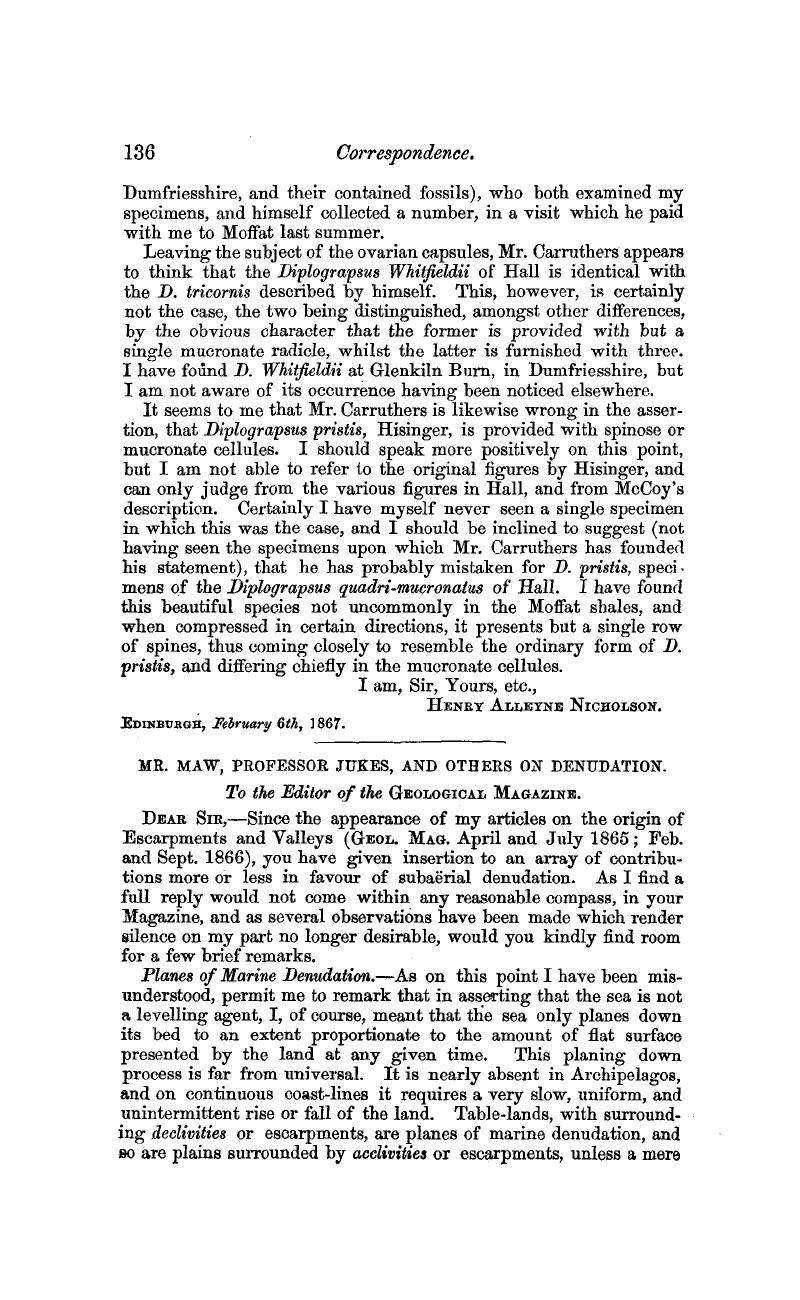No CrossRef data available.
Article contents
Mr. Maw, Professor Jukes, and others on Denudation
Published online by Cambridge University Press: 01 May 2009
Abstract

Information
- Type
- Correspondence
- Information
- Copyright
- Copyright © Cambridge University Press 1867
References
page 137 note 1 Mr. Topley (Geol. Mag., Oct. 1866), makes some statements in reference to the escarpments and sea-cliffs of E. Yorkshire, which, if necessary to the support of the subaërial theory, show that this theory is not applicable to many parts of the S.W. of England and other districts, where the sea, in making cliffs shows a tendency to follow the strike, and where many inland cliffs run obliquely to the strike. Numerous instances might be brought forward did space permit.
page 137 note 2 Professor Jukes clearly includes ravines and narrow winding valleys crossing watersheds.
page 137 note 3 This was long ago shown by Sir R. I. Murchison.
page 138 note 1 Such as must have resulted from these sudden upstarts of the sea-bottom, which are indicated by the transverse horizontality of many systems of terraces now at considerable altitudes above the level of the sea. (See account of Raised Beacher near Llangollen, in Geol. Mag., Sept. 1866, Fig. 13, in the plate, which furnishes a very inadequate representation.)Google Scholar
page 138 note 2 It is remarkable that such submarine troughs as Captain Beechey's “Ditch in the North Channel” should not have been more particularly examined with reference to denudation.
page 138 note 3 In Geol. Mag., Nov. 1866 p. 518, DrLindström, thinks I have mistaken glacial grooves for wave-marks. An inspection of the locality would, I think, convince any unbaissed geologist that they occur in situations, and are associated with phenomena, such as shallow pits and caves, which furnish a strong presumption against a glacial origin.Google Scholar
page 138 note 4 Mr. Wynne, in asserting that it is impossible to distinguish between rock-pillars formed by the atmosphere, and those formed by the sea, unintentionally ignores the validty of that dualogical reasoning on which geology is founded. Even dynamically considered, there can be no doubt that the effects of a slow vertical agency can be easily distinguished from phenomena produced by the lateral undermining, and to-and-fro action of the sea. Mr. Kinahan, in answer to Mr. Wynne, has brought forward a convincing illustration of the marine origin of rock-pillars (Geol. Mag., Feb., 1867, p. 89).Google Scholar

